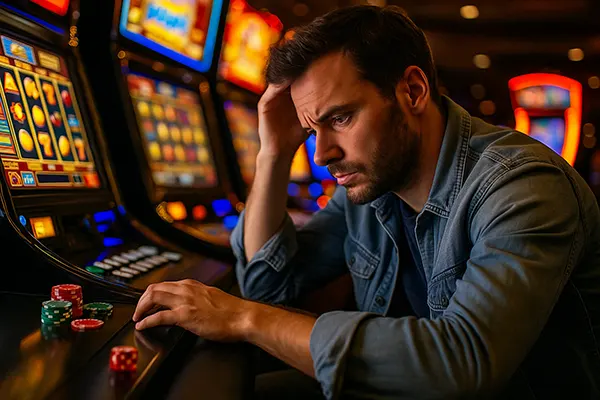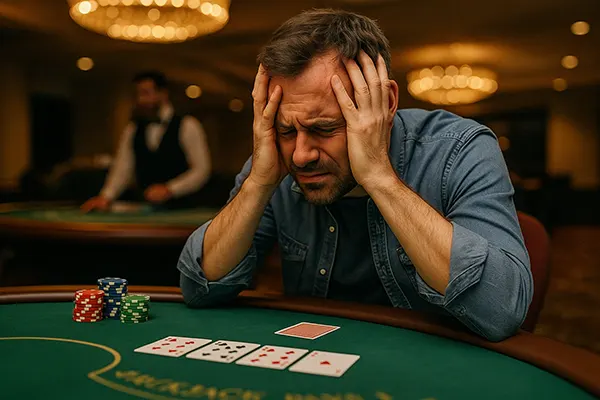
Player Psychology: Why We Keep Playing Even When We Lose
Understanding the psychology of gambling is key to explaining why players persist in gameplay even when they are experiencing losses. This behavioural phenomenon has deep roots in cognitive biases, emotional attachment, and neurochemical rewards. In this article, we delve into the mental mechanisms that keep players hooked, regardless of outcomes.
The Illusion of Control and the Chase
One of the primary psychological drivers in gambling is the illusion of control. Players often believe they can influence outcomes in games of chance, such as slots or roulette. This belief fuels persistence, as each spin or round feels like a new opportunity to “do it right”. In reality, the random nature of these games offers no room for strategy or skill.
Closely tied to this is the concept of “chasing losses”. After losing, many players convince themselves they are just one step away from a big win that will cover previous setbacks. This fallacy can lead to longer sessions, increased stakes, and more significant losses over time.
The gambler’s fallacy also plays a key role. If red appears three times on roulette, players might bet on black believing it’s “due”. This misinterpretation of randomness drives continuous play despite unfavourable odds.
Emotional Investment and Reinforcement Loops
Emotional engagement grows with every wager. When a player invests time and money, it creates a sunk cost effect—they feel compelled to keep playing to justify past losses. This emotional attachment often overrides rational decision-making, especially during prolonged losing streaks.
Variable ratio reinforcement schedules—common in slot machines—deliver wins randomly. This unpredictability is psychologically powerful, as intermittent rewards encourage repetitive behaviour. Even small wins act as dopamine triggers, sustaining excitement and masking cumulative losses.
Design elements also heighten emotional involvement. Lights, sounds, and visual effects mimic the stimuli of wins, offering “near-miss” scenarios that simulate success. These stimuli keep the brain engaged and hopeful, even when the outcome is a loss.
Social and Environmental Influences
Gambling environments, both physical and digital, are designed to reduce player awareness of time and spending. Online platforms remove natural stopping cues—there are no clocks, closing hours, or social accountability. This fosters longer play sessions and impulsive decisions.
Social norms and peer influence also play significant roles. When others are playing and appearing to win, the perceived success of peers fuels competitive behaviour and encourages further engagement. The presence of leaderboards, jackpots, or win notifications reinforces this dynamic.
Promotional tactics such as bonus offers, free spins, and loyalty programmes give an illusion of value and reward, further normalising ongoing play. These rewards often encourage higher betting volumes under the guise of gaining more “perks”.
The Role of Cognitive Dissonance
Cognitive dissonance occurs when behaviour contradicts beliefs—such as recognising gambling is harmful but continuing to play. To reduce this discomfort, players often reframe their actions with rationalisations like “It’s just entertainment” or “My luck will turn around”.
This psychological defence helps players manage the guilt or shame of repeated losses and supports continued participation. As players build narratives to support their behaviour, they become more resistant to recognising the need to stop.
Over time, dissonance reduction reinforces problematic patterns. The brain adjusts expectations and normalises losses, viewing them as part of the journey rather than signs of harm or risk.

Neuroscience Behind Gambling Behaviour
At a neurological level, gambling activates the brain’s reward circuitry, particularly the dopamine system. Anticipation of a potential win stimulates this system similarly to drug intake, producing feelings of euphoria and craving. This makes it harder to stop, even when losses outweigh gains.
Brain scans show heightened activity in areas linked to risk and reward during gambling. These areas override those associated with self-control and rational thought. As a result, even cautious individuals may find themselves acting impulsively while gambling.
Prolonged exposure to gambling leads to neuroadaptations. Players become less sensitive to regular wins and seek bigger risks for the same thrill. This progression is typical of behavioural addiction, reinforcing the cycle of loss-chasing and emotional dependency.
Implications for Responsible Gaming
Understanding these psychological and neurological triggers is essential for creating effective responsible gambling tools. Self-exclusion programmes, deposit limits, and activity trackers help interrupt harmful patterns by reintroducing awareness and control.
Gamification of responsible gaming tools—such as progress tracking or rewards for healthy play—can turn positive habits into engaging experiences. This counters the manipulative design of many platforms and supports behavioural change.
Ultimately, education is key. Players who understand how their minds and bodies respond to gambling are better equipped to recognise harmful patterns and take preventive steps before escalation occurs.
